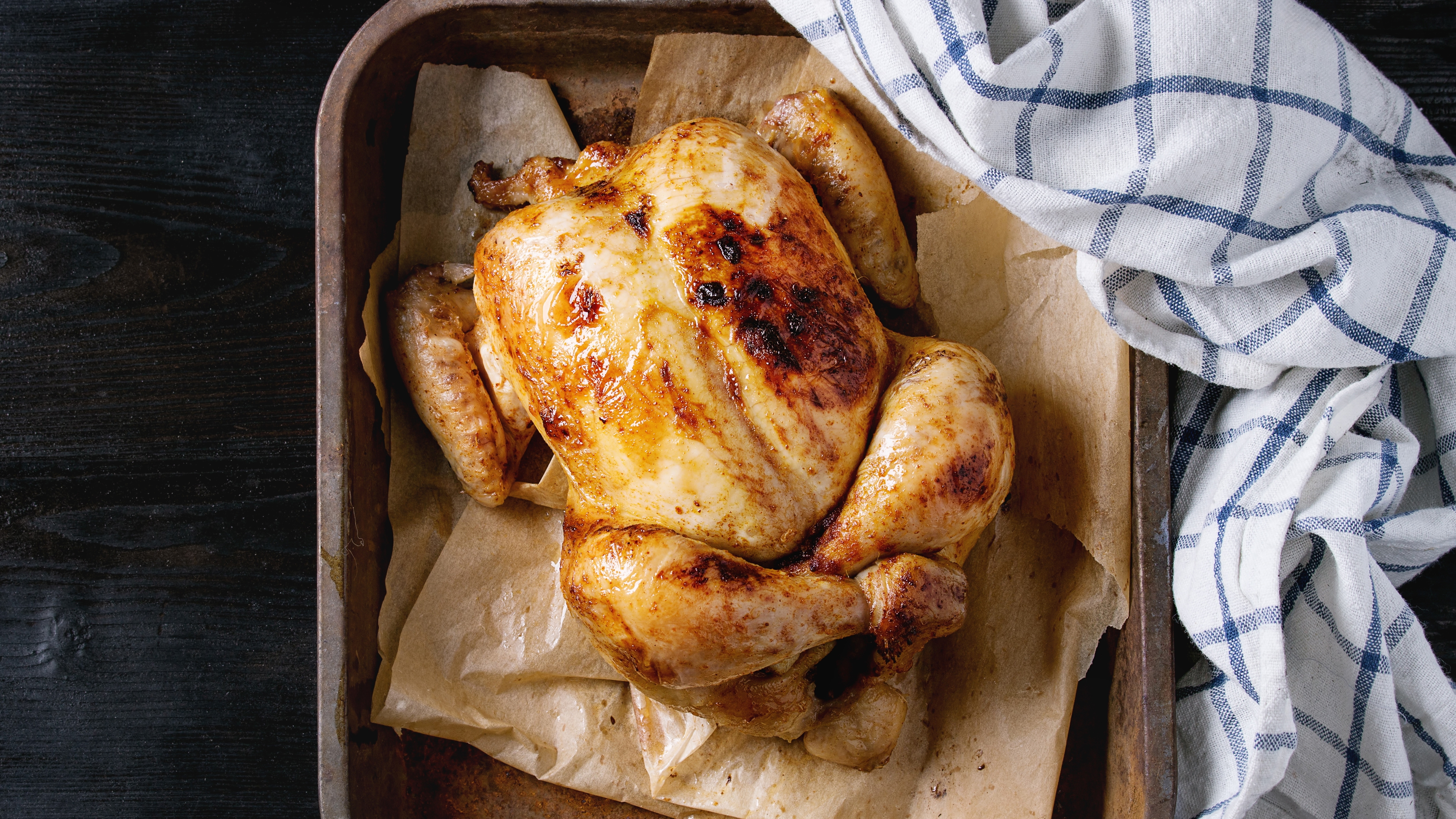What Exactly Is Air-Chilled Chicken?
When you pass the meat counter at the grocer these days, you might see chicken advertised as "air-chilled." What does this mean? Does it taste different? Is it worth paying extra for?
Normally, when chicken suppliers need to cool down chicken for packaging, they soak it in water. Some of this water gets absorbed into the chicken, making for a product that's watered down to about a "90/10" chicken-to-water ratio, according to Rudy Sadej, an experienced butcher/cutter at a Whole Foods in Chicago. (Whole Foods, not surprisingly, enthusiastically pushes air-cooled chicken on its website.)
According to Bell & Evans, a leading air-chilled chicken supplier: "With conventional chilling systems, chickens absorb up to 12 percent of their body weight in added chlorinated water. This water 'weeps' out of the meat and is trapped in the 'diaper' you find in most fresh chicken packaging." Not only does that sound unappetizing, the chicken then shrinks as it cooks as it loses water in the oven or on the stove.
With air-cooling, the chicken is chilled by air, not water. Says Sadej: "Imagine having the air-conditioning on full-blast." Bell & Evans is a bit more specific, describing three cooling chambers, each monitored to maintain a specific temperature and humidity. "The birds traverse through these chambers on almost two miles of track. It takes them almost three hours to move through the system." At the end, you have a chilled bird and no water.
As a result, when you buy air-chilled chicken, you not only get more meat for your money, but a rich, more concentrated chicken taste. Sadej describes a "sweet, almost honey" smell that emanates from the appetizing air-chilled bird. The Whole Foods site lists such benefits as "tender succulent meat [that] keeps the natural flavor of the bird locked inside. Additionally, because the birds have not been processed with water, they cook more quickly."
The multistep method helps account for the higher price of the air-chilled chicken (around $7.99 a pound compared to generic store-brand chicken for under $2 a pound). Tom Super, senior vice president of communications at the National Chicken Council, notes some reasons for that increased cost: "It requires more space in the plant, there are higher electricity costs, and the carcasses take longer to chill. Thus, these products cost more." But some customers still think it's worth it: "It's one of our top sellers," notes Sadej.
Super states in an email: "I wouldn't say that one system is 'better' than the other. ... After a chicken is slaughtered, the USDA requires that the carcass temperature be lowered within four hours to at least 40 degrees—both systems must meet this regulation... Both are safe and effective. It is really up to the consumer as to which product/method they prefer based on cost, taste, etc." (Granted, in his job, he likely has to be diplomatic about chicken processes.) But I'm intrigued enough by these appetizing air-chilled descriptions—especially that "honey" aroma—to want to try this chicken out next time I'm feeling extravagant at finer butchers.
